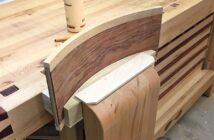Hand Skills
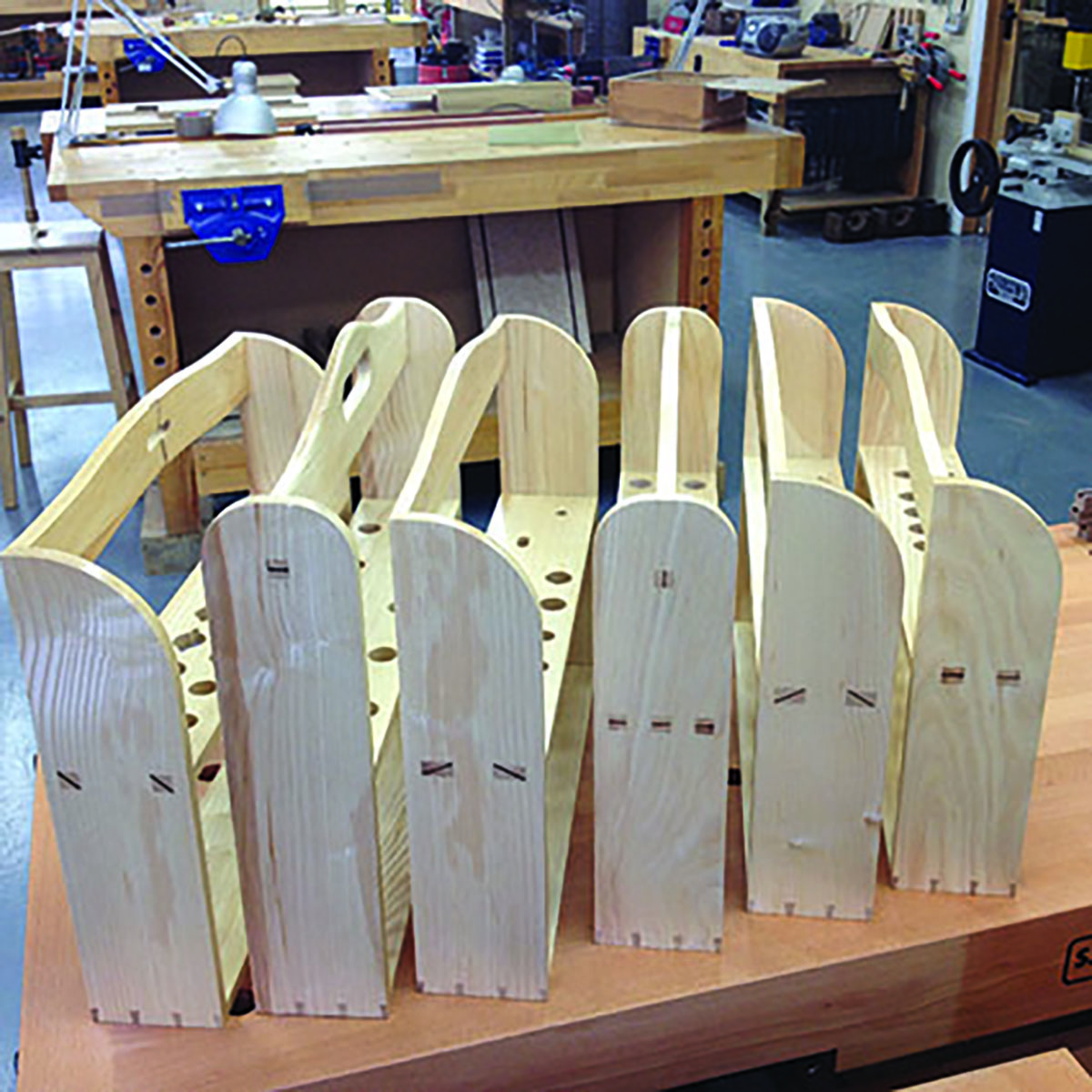
Peter Sefton’s students find their skills tested by having to produce really neat looking through tenons
Continuing on from an article on the dovetail housing joint used on our students’ tool racks, some of the guys practised their hand skills cutting through mortice and tenons wedged, both for aesthetics and strength. As part of the exercise they needed to decide on the configuration of tenons – would it be two or three? The wedges also led to a few design decisions, like how many wedges and then their placement; vertical, horizontal or diagonal – most opted for diagonal.
The cutting of these mortices could be done purely with mortice chisels, but I demonstrated both drilling out and routing the waste. Both techniques ultimately requiring some careful chisel work, but the routing method was a favourite, using the same router housing jig that was talked about in last month’s article. This left just a millimetre around the cutter for final chisel clean up.
One of the most important things to remember when making decorative show joints like these is that they must be good and clean. Most mortices are hidden by the shoulders of tenons, but these are on show. The starting point for clean joints is good marking out and I used my Veritas dual marking gauge for the mortice and tenon. The Veritas gauge’s cutting discs are set so the bevel edge of the chisel is cutting into the waste side of the mortice, leaving a very clean square line around the mortice. The tenons were cut by hand, using tenon saws and the shoulders were cleaned up with a sharp bevel edge chisel.
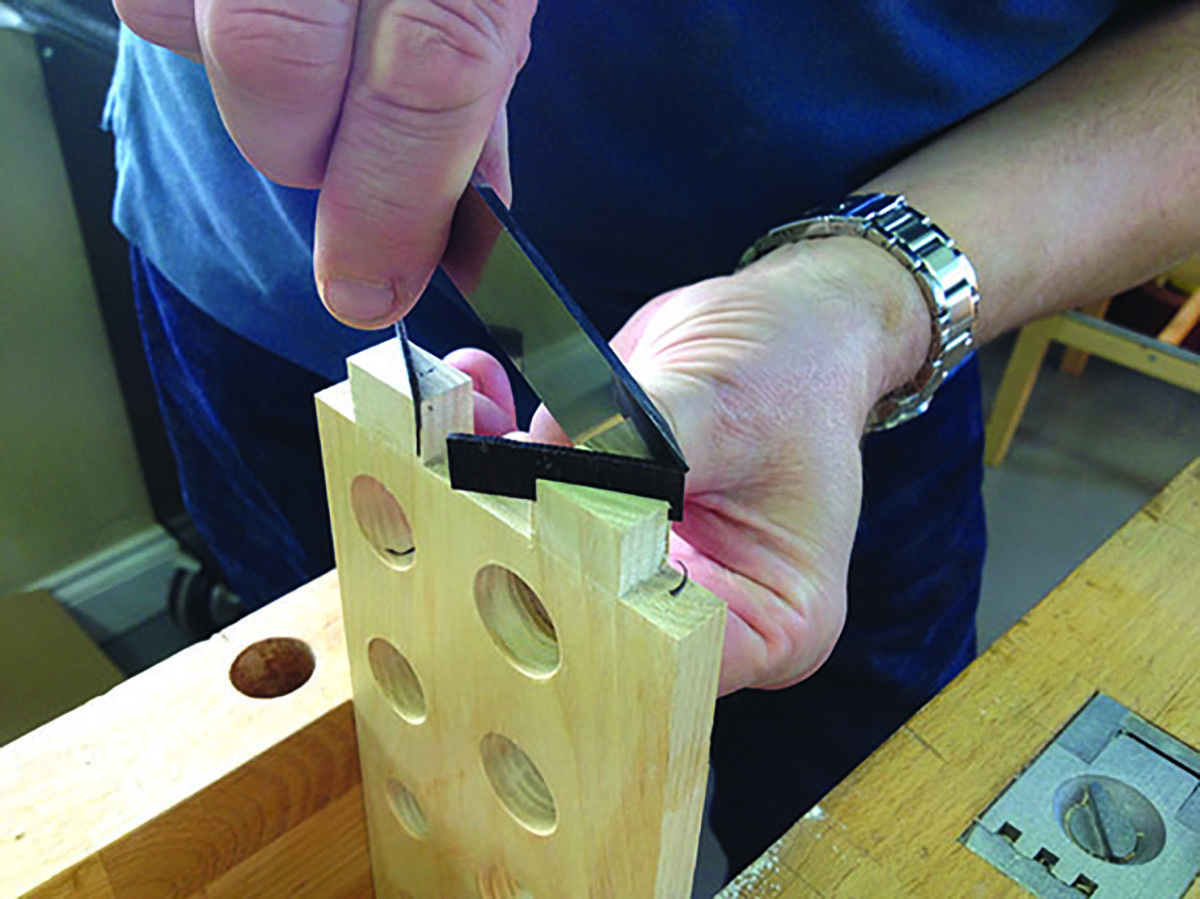
Trimming an African blackwood wedge for a perfect fit
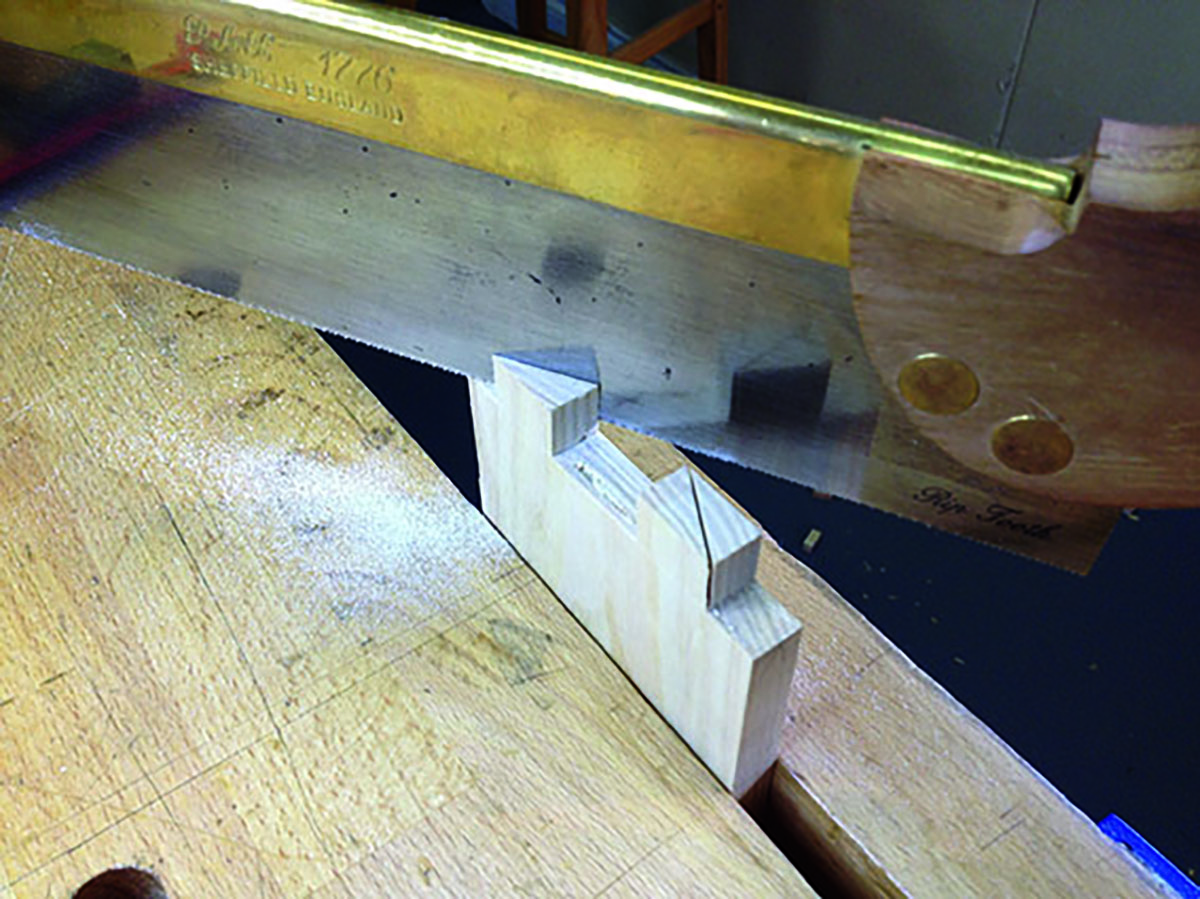
The saw kerf must go exactly corner to corner
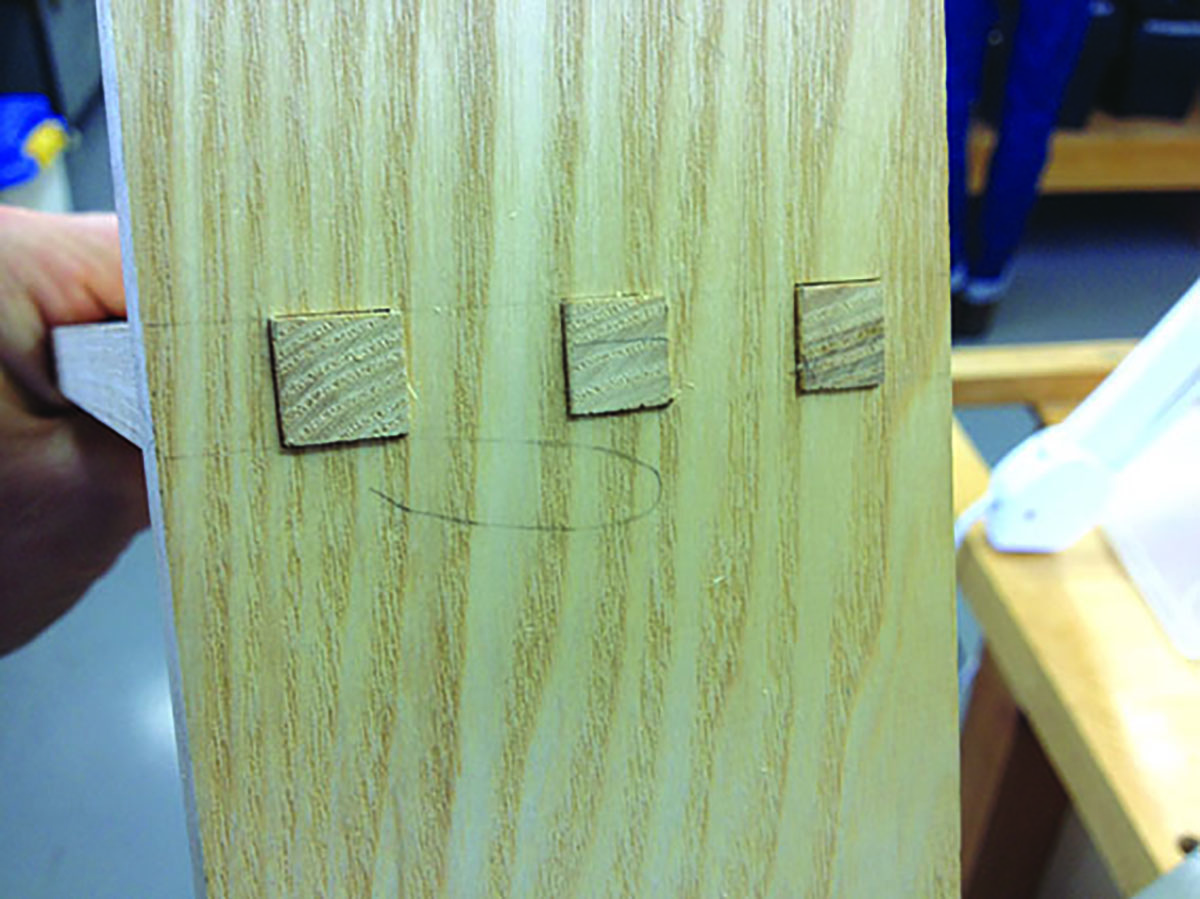
Checking the through tenons are a perfect fit before fitting wedges
The wedges were made from timbers that contrasted the pale ash (Fraxinus excelsior) rack, such as African blackwood (Dalbergia melanoxylon), American black walnut (Juglans nigra) and lignum (Guaiacum officinale), which were chosen to give the best effect. Remember, for those wedges set diagonally across the tenons, the wedges needed to be cut with angled ends to match the edges of the mortice. Now the tool racks are completed and full of tools, the guys are moving onto bigger and more complex projects using their newfound experience.

